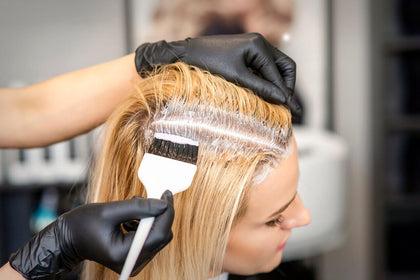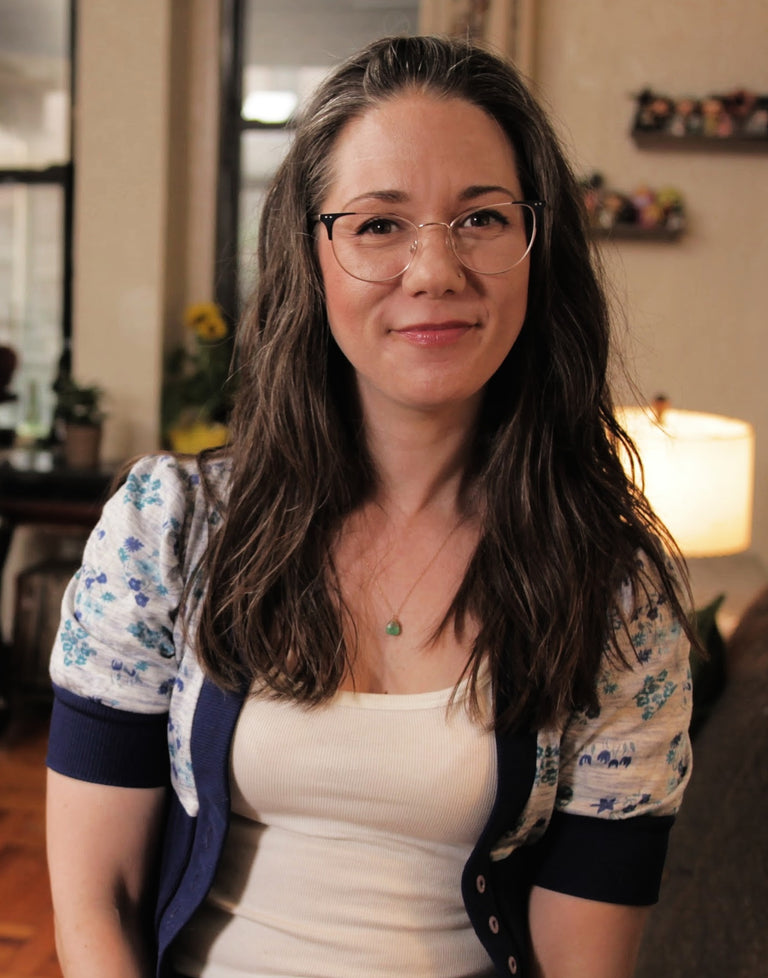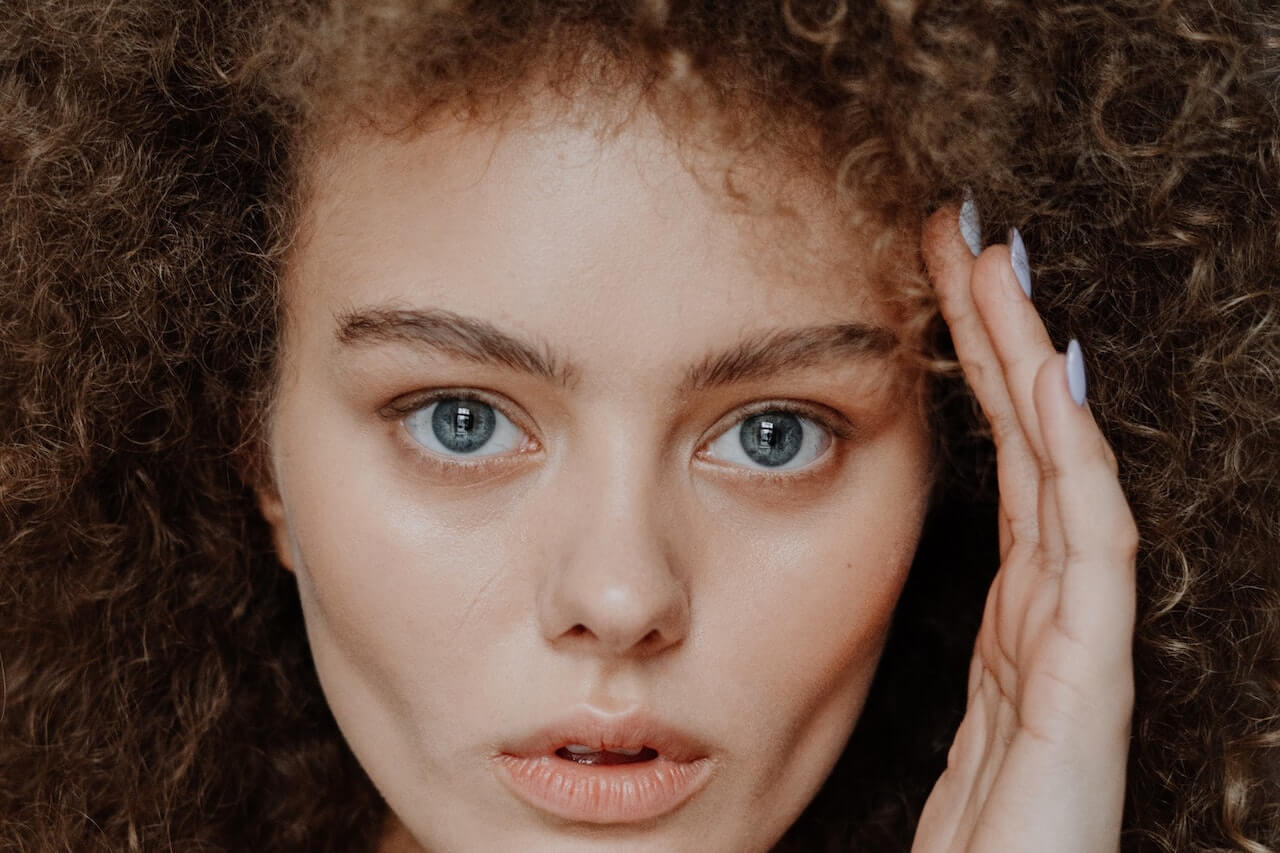From honey blonde to Nordic white, there have never been more options for lightening your hair. But prepping your hair before you bleach is an important step of the process. Why? Because it takes heavy-duty chemicals to get deep into the hair shaft where the natural coloring or pigment lives.
Keep reading to get the full scoop on what you can do to prep your strands before bleaching — plus, find out what color-safe products you should use to keep your hair color shiny and beautiful.
Why Prep Hair for Bleaching?
Without preparation, bleaching can do to your hair what a running a marathon can do to your body — wreak havoc!
Bleaching is a chemical technique that opens up the hair cuticle and then dissolves the natural melanin that gives hair its color. The longer the bleaching agent is left in the hair, the lighter the hair becomes.
“As you can imagine, removing pigment isn't always kind to the hair,” said master stylist Scott Williams, owner of Studio S in New York. “It requires forcefully opening the hair cuticle and dissolving the darker pigment, eumelanin, within the hair. During this process, bonds in the hair are broken — it's inevitable.”
Since the cuticle is the protective outer layer of the hair shaft, and bleaching essentially wrenches open that layer to get to the melanin that gives each shaft its color, the process can potentially result in major damage if not done properly.
NEW: HYDR-8 Collection for Dry, Damaged Hair
#include-related-slider#
How to Prep Your Hair for Bleaching
The good news is there are several things you can do to get your hair ready for bleaching. The further ahead of time you start prepping, however, the better your outcomes might be.
Get a Professional Consultation
While it's possible to bleach hair at home, the best way to maximize your chances of success and minimize the possibility of major hair damage is to seek out the advice and expertise of a professional colorist.
“The bleaching process fully opens the cuticle layer of the hair in order to remove all hair color pigment, which can absolutely lead to damage if not done correctly," explained celebrity colorist Michael Canale. "If you leave the bleach on too long, it will disintegrate the hair."
Aside from being trained in the art and science of hair color, colorists can evaluate your hair’s condition and texture to formulate a plan specific to your needs. “I always have thorough consultations before beginning any lightening journey,” said Williams. “What are your goals, what is your budget, how does your hair fit into your lifestyle?”
Depigmenting hair can also be a major commitment in both time and money. “Services range in price and can become expensive,” said Lindsay LooWella, master color expert at J.L. Byrd in New York. “Good hair ain't cheap and cheap hair ain't good.”
For those with darker hair, it's more likely you will need multiple treatments. It can take months to reach their desired color, and with each additional treatment, things become trickier since each treatment is damaging to hair shafts. Layering damage on damage can be tricky, but professional colorists are trained to know how to do it.
“You don't want to crack the cuticle beyond repair, so it's better to go for multiple sessions and do it right than damage or even chemically melt your hair by trying to get the results you dream of too quickly,” said Madison Dufour, licensed barber, cosmetologist and founder of The Exquisite Find hair blog.
Your consultation might also include a patch test, which will allow the colorist can see how your skin and hair will react to a bleaching session. Once you’ve developed a game plan with a colorist, then you can start tweaking your hair care game to prepare for game day.
Shop: Shea Whitney's VEGAMOUR Picks
No Heat Styling Tools or Chemical Treatments
Another important step in prepping for bleach is avoiding heat styling for at least a week before treatment. Most experts recommend skipping the flat iron and other heating tools for as long as you possibly can in advance of a depigmentation treatment.
“If you must use heat tools, like a blow dryer or curling iron or flat iron, use heat protectant beforehand,” said Dufour.
Heat styling can both strip your hair of moisture and cause heat damage, which is counterproductive when you’re trying to boost your hair’s strength and moisture before bleaching. Ditto for other harsh chemicals.
Also: Why You Should Avoid Heat Styling When Growing Out Your Hair
Moisturize, Moisturize, Moisturize
Bleaching hair is an extremely drying process, so it’s important to infuse as much moisture into your hair ahead of time as possible. If your hair is already dry, brittle and weak, bleaching is likely not a good idea. Most hair professionals won't bleach damaged hair.
“Leading up to your appointment, dedicating yourself to a deep conditioning regimen can be really helpful to make sure the hair is nourished,” said Williams. “Bleaching, at best, is drying to the hair, so not starting with dry hair is a plus.” Most experts agree that committing to a deep conditioning treatment once per week for several weeks before bleaching is beneficial.
There are many options for DIY vegan hair masks you can whip up at home, and experts recommend coconut oil and marula oil as other ways you can add moisture to your hair. If you want an ultra-rich deep conditioning option that will infuse your locks while you sleep (or hang around in your jammies during the day), our deep conditioning hair mask is packed with all-natural conditioning agents and powered by Karmatin™, our vegan keratin protein.
Check Out More Amazing Before and Afters!
Don’t Shampoo Right Before Bleaching
While there is some debate around whether dirty hair is better than clean, most experts agree that you should not wash your hair for at least a day or two before your treatment.
“Avoid washing your hair the day of chemical treatments,” said Canale. “The natural oils in the hair are beneficial to the color process and the health of your hair!” The natural oils that build up on your hair and scalp after a few days without shampooing are thought to provide a thin protective layer for both your hair shaft and your scalp.
“Your natural oils are your best friends in conditioning your skin before an on-scalp chemical service,” said LooWella. Another thing she recommends: “Do not do any aggressive brushing or scalp stimulation as this can cause pain and discomfort during the process as well.”
How to Care for Bleached Hair
Once you’ve achieved the hair color of your dreams, efforts turn to maintenance, which is just as important as prep. Here are some expert-backed tips to consider for your new hair care routine.
Use Products for Color-Treated Hair
This probably seems like a no-brainer, but all experts agreed that hair bleaching needs to be seen as an investment, which also applies to the hair care products you use.
“Investing in high-quality shampoo and conditioner is key,” said Williams. “Do not settle for the bargain brand at your local drugstore. Any hair color service is an investment, and using inferior products will affect the results of that investment.”
Think products that have been specifically formulated for color-treated hair or are meant to boost strength and moisture. Blonde hair care also means using a toner for color correction, like a purple shampoo, for example. Alternating between moisturizing shampoos and conditioners with these benefits will cover your bases.
When it comes to boosting hair strength in an all-natural and cruelty-free way, look for color-safe, vegan, sulfate-free shampoos and conditioners.
Give Your New Locks Some Extra TLC
After using shampoo and conditioner, be gentle when towel drying! No twisting or rubbing. Bleached hair needs some extra love, so think soft scrunchies, friction-reducing pillowcases and more regular deep conditioning.
“Everyone can benefit from weekly or bi-weekly deep conditioning treatments,” said Williams. “Create healthy hair habits, like not shampooing too often (one to two times weekly is ideal), using heat protectant with all hot tools and wearing hats if you are in the sun a lot.”
The Takeaway
When you bleach your hair, you put your strands through an intense chemical process. By prepping your hair ahead of time, you can minimize the chances of potential damage.
Also, instead of bleaching your hair on your own, which could result in chemical burns on your scalp or hair breakage, consult with a professional to get a clear picture of how the process works and what you should expect with your specific hair texture, type and natural color.
And once you achieve your desired shade of lighter hair, keep it looking its best by using hair wellness products, like a weekly hair mask, to strengthen and moisturize your strands. Your hair will be better for it!
More From VEGAMOUR
- What to Do Before Your Next Hair Color Appointment
- How Often Can You Dye Your Hair?
- How to Keep Your Hair Color From Fading
Photo credit: okskukuruza/iStock
Back





















